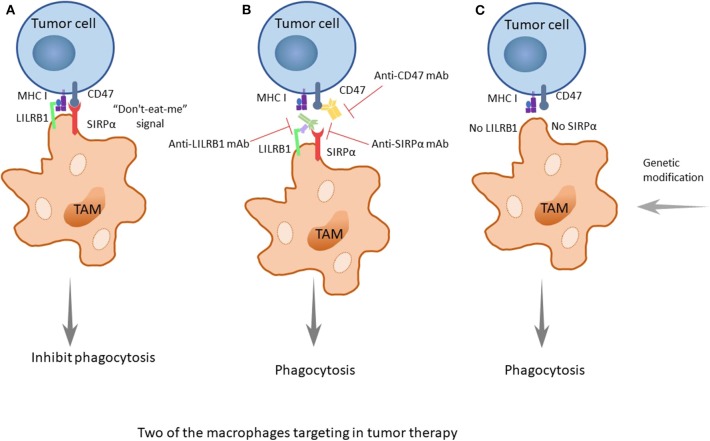Figure 3.
The two important treatment strategies targeting SIRPα/CD47 and LILRB1/MHC I. (A) CD47 is identified as a marker of self, or as a signal of “do-not-eat-me,” when the CD47 molecule of tumor cells is combined with its receptor, SIRPα, which is expressed on TAMs, and when MHC I on tumors is recognized by LILRB1 on TAMs; the signals will inhibit the phagocytosis of macrophages, promoting the occurrence, and development of tumors. (B) When using drugs such as monoclonal antibodies (anti-CD47 mAb, anti-SIRPα mAb, or anti-LILRB1 mAb), the recognition pathways are blocked, and the phagocytosis of macrophages is enhanced. Furthermore, the better treatment effect occurs when both pathways are blocked. (C) As it was discovered earlier that knocking out LILRB1 genes can cause macrophages to kill tumor cells, it could be predicted that more genetic modification of macrophages, such as making the SIRPα gene silent to suppress its expression, can achieve a similar effect.

